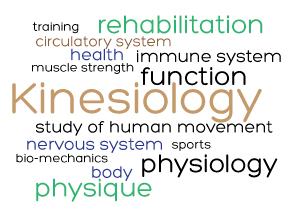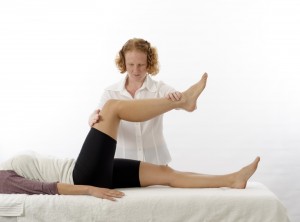 While I am not claiming to be the expert (professional) in “Applied Kinesiology”, which requires extensive study and certification, I am excited to share the basics of muscle testing. Basics can also be learned and practiced by lay people. It may be interesting to know that in Germany, kinesiology is used quite frequently in conjunction with magnetic resonance stimulation by MDs as well as MRS health practitioners. Its purpose and usefulness in this particular field will be covered in a separate paragraph.
While I am not claiming to be the expert (professional) in “Applied Kinesiology”, which requires extensive study and certification, I am excited to share the basics of muscle testing. Basics can also be learned and practiced by lay people. It may be interesting to know that in Germany, kinesiology is used quite frequently in conjunction with magnetic resonance stimulation by MDs as well as MRS health practitioners. Its purpose and usefulness in this particular field will be covered in a separate paragraph.
Applied Kinesiology (AK) was initiated in 1964 by the American chiropractor by George, J. Goodheart, Jr., D.C. and has become quite elaborate. Its basic notion is that every organ dysfunction is accompanied by a specific muscle weakness, which enables diseases to be diagnosed through muscle-testing procedures. Most practitioners are chiropractors, but naturopaths, medical doctors, dentists, nutritionists, physical therapists, nurse practitioners and magnetic field therapists are known to take advantage of this science as well.
Energy medicine suggests that one of the most profound natural healing strategies involves normalization of the body’s electrical circuitry. To identify imbalances in our energy system, every bit as real as your circulatory, nervous and immune system, muscle strength can be used as a guide.
Basic muscle testing is relatively easy to learn. Kinesiology involves testing the arm or another body part (preferably the leg when testing during MRS therapy) for strength or weakness. To practice muscle testing you need a partner. Stand facing one another. Your partner raises the arm, straight out, directly in front or to the side at shoulder height. The arm needs to be straight. Don’t use arms/shoulders that are or have been injured in any way. The arm and shoulder used for muscle testing need to be able to resist a downward force. The person doing the testing, places one hand, or two fingers above the wrist of the outstretched arm. The other hand of the tester can rest on the shoulder of the subject, or not. Before you push down on the arm make sure your partner is ready to resist. You need to give him or her time to tighten the arm to resist before you push down. Similar rules apply if you test the bent leg during MRS application. Say “resist” and push down on the tested arm or leg with your hand or two fingers. Try this procedure a couple of times before testing anything. It will help you to acquire a feeling for the person’s relative arm or leg strength.
Remember, muscle testing is NOT a competition. Neither the testing nor the tested person should try to overpower the other. To do muscle testing on a child or someone with a very weak arm, use only one finger and lower yourself to their level. You can do self muscle testing as well. For instance in PEMF if one likes to test muscle strength while checking intensity levels on the mat.
Testing different items or circumstances: Select something you want to test (maybe even the control panel of the magnetic field device to prove its effectiveness to skeptics) and have your partner hold it against his or her chest, while raising the other arm for testing. Once your partner is holding or focusing on the item, say “resist” and push down on his or her arm. If the arm becomes “weak”, it signals a negative response; if it stays “strong”, a positive response. These are the beginner basics of muscle testing, a technique you may wish to play with. For more fun, use muscle testing as an indicator to get “yes” or “no” answers to specific questions. However the response depends on how specific the question is and may need some practice.
Accuracy: To understand the issues around accuracy, let’s first take a look at how our body responds to things energetically. Einstein and Quantum Physics confirm that everything is energy. Each item and each one of us has a unique energy vibration signature. The “weak” or “strong” muscle testing response reflects energetic information we hold about or associate to the item tested. It also reflects the mirror of your subconscious mind which seems to provide the correct answer at all times, if not intentionally sabotaged with negative or positive thoughts prior to testing.
Magnetic resonance stimulation (MRS) and the uniqueness of our “biological window”, explored by using kinesiology: Everyone has their own individuality. This personal uniqueness should be taken into account, applying magnetic resonance stimulation, mostly in conjunction with intensity level settings. As taught in one of this website’s educational sessions, to prevent primary immune responses, begin with low dosages and increase them progressively at lengthy intervals until the desired maximum therapeutic dose is reached. Doing so, kinesiology may serve very valuable. Intensity levels are signaled to cell membrane receptors, responsible whether to accept a certain stimuli as optimal or not. A receptor may be compared with a keyhole which can only take one particular key. Modern earth based magnetic field therapy equipment, as the iMRS, deliver a wide variety of time-varying impulses, amplitudes and frequencies, designed to meet the body’s “biological window”. Nevertheless, muscle testing can guide the therapist into individually favorable intensity levels, in other words, into the perfect resonance. This type of muscle testing is part of the energy medicine curriculum, specializing in magnetic field therapy.

Kinesiologist applying downward pressure on bent leg
Most chiropractors and general health practitioners are educated in kinesiology. However, as mentioned in this blog, all of us, company representatives as well as clients can learn this technique. While experts are capable to determine a strong muscle by maybe only testing the patient’s finger, lay people find it much easier to test stronger body muscles. Testing intensity levels during magnetic field stimulation, the patient rests on the mat, holding up his or her leg bent (strongest muscle), while being asked to “resist” at various intensity levels. Wherever the thigh muscle feels the strongest, actually clicks into a solid position, almost impossible to push down, you may be certain of perfect resonance. Intensity levels for pad and probe can be tested in a similar way.Needless to say, there are sophisticated biofeedback accessories available when purchasing the iMRS. However, you may have fun, exploring your body’s reflexes in conjunctions with PEMF or testing other health remedies, like vitamins and/or food tolerance.
ENJOY CHALLENGING THE INTELLIGENCE OF YOUR MUSCLES!
H E R M I N A
